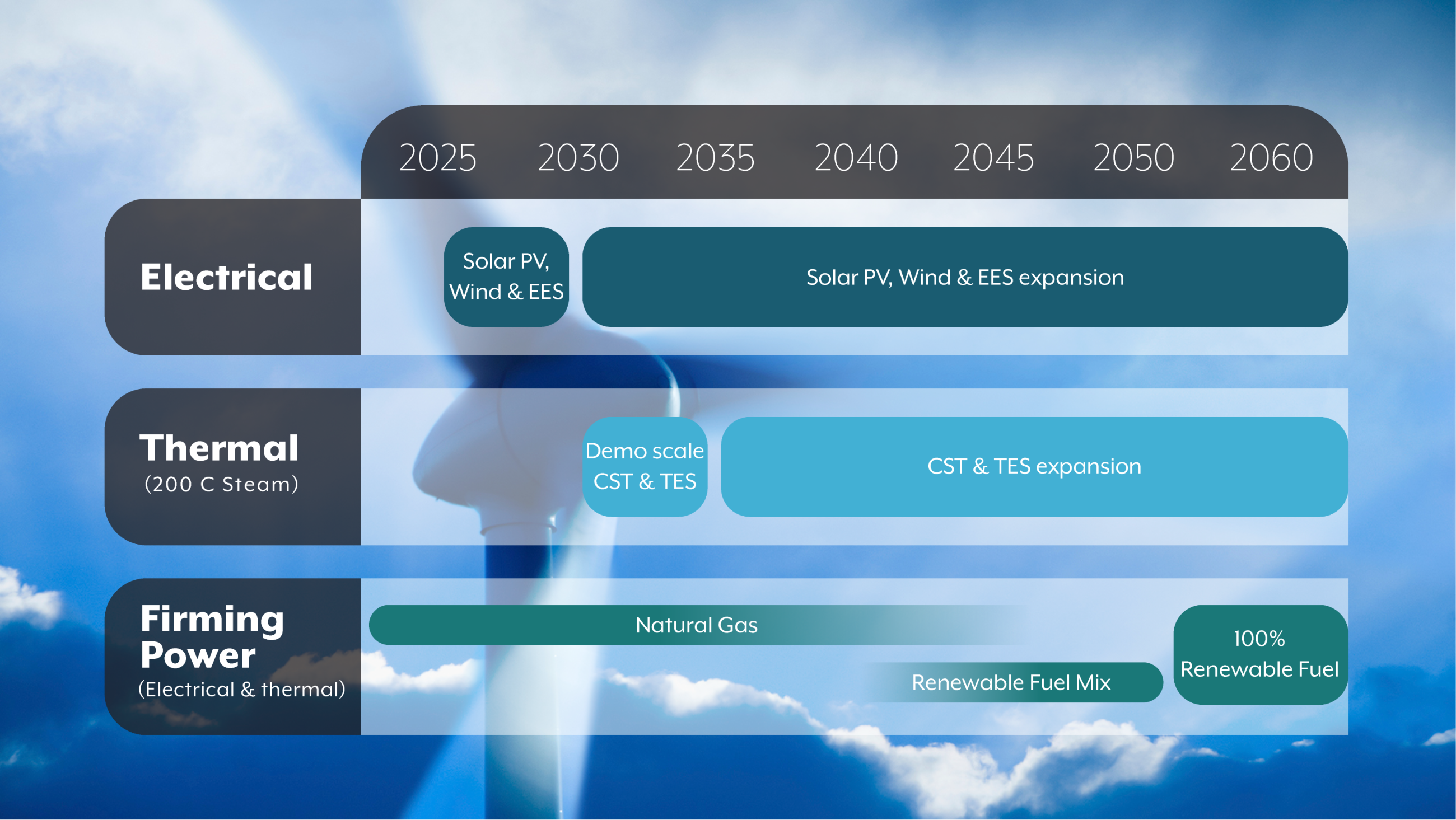KBR Supports Arafura’s Pathway to Achieve Net-Zero by 2050
Rare-earth elements are a critical resource and essential part of today’s lifestyle due to our dependence on technology and pursuit of clean energy solutions. They are key elements used in the automotive, consumer electronics, high speed magnet trains, wind energy, aerospace and healthcare sectors, as well as robotics and military applications.
As leaders in innovative end-to-end solutions, KBR collaborates with customers as an integrated partner to help deliver sustainable and safe critical minerals projects, including copper and rare elements, which are vital to the world’s major and emerging economies.
Located 135km north of Alice Springs, Northern Territory, the Arafura Rare Earths Limited (Arafura) ~A$1b Nolans Project is one of the largest, rare earths projects in the world, most of which is enriched with ‘magnet feed’ rare earths, known as neodymium-praseodymium (NdPr). Most emissions in the production lifecycle of rare earths minerals such as NdPr arise in the processing phase from low grade ore to oxide, which is a very energy-intensive process.
As part of Arafura’s ESG commitment to be a trusted global leader and supplier of choice for sustainably mined and processed rare earth products, Arafura has committed to achieving net-zero greenhouse gas (GHG) emissions from the Nolans project by 2050. An important step in this journey to net-zero is the recent release of the GHG Emissions Reduction Pathway for stationary power, which accounts for over 85% of the project’s forecast emissions.
KBR’s energy transition experts were engaged to undertake a study to understand the current GHG emissions from the Nolans project and potential pathways to reach net zero by 2050.
With no products available on the market able to evaluate all current and emerging energy options, and the entire mix of energy production activities being undertaken for the Nolans project, the team developed a custom assessment tool that captures all current and future power generation and conversion emissions reduction options. Based on these options, five reduction pathways were developed, all of which could achieve net zero by 2050 through the deployment of zero-emissions generation technologies in combination with phasing in renewable fuels.
With each pathway consisting of one or more emissions reduction options, KBR’s custom assessment tool was used to construct each candidate pathway by implementing specific emissions reduction options at different scales and different times. This has enabled Arafura to make informed decisions by equipping them with a broad range of credible options that can be compared and interrogated to determine the best option to achieve their net-zero targets by 2050.
“Our work constructing a custom assessment tool to develop pathways for emissions reduction is a reflection of our best-in-class technical solutions,” said KBR’s Max van Someren, principal advisor (energy advisory). “We are proud to be able to support our customers including Arafura, make informed decisions to achieve their goals as a business.”
Pathway 1 has been selected as the preferred GHG Emissions Reduction Pathway for stationary power for the Nolans project as it is one of the two lowest cost pathways modelled.
Pathway 1 consists of renewable sources for electrical power, such as low cost solar photovoltaics and wind power for electricity generation, combined with large-scale thermal energy storage heated from concentrated solar thermal as a source of process steam. Providing a consistent source of renewable thermal energy for steam generation is an important part of the solution, since the processing plant requires nearly three times as much thermal energy as electrical energy.
The development and implementation of a GHG Emissions Reduction Pathway will be an ongoing program of work for Arafura throughout the life of the Nolans project. Future pathway updates will also address other emissions sources within the Project, such as mobile mining equipment and chemical processes.
”KBR’s work in developing Arafura’s GHG Emissions Reduction Pathway for the Nolans Project is a great example of our ability to integrate with our customers to support efforts in transitioning to renewable energy sources,” said Wayne Nolan, vice president, Infrastructure Solutions Australia. “This work is critical for building innovative, sustainable infrastructure and economies of the future and will be vital to Australia achieving 43% reductions in emissions by 2030 and net-zero by 2050.”
KBR has been working with Arafura on the Nolans Project since 2019 in a collaborative to project manage the process plant and non-process infrastructure. The project is in the process of reaching final investment decision with financial close of project funding scheduled for mid-2023, and first production expected towards the end of 2025.




